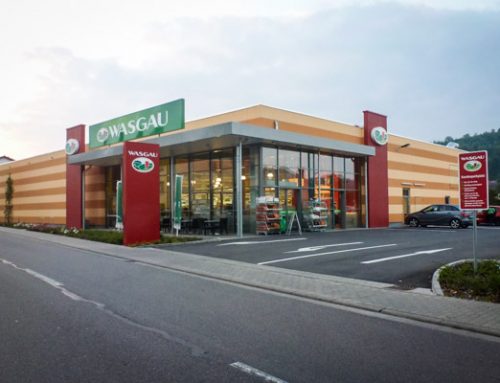Rental price increase in 2018 stronger than in previous years
Demand for logistics properties will remain stable at a high level due to the continued growth of online trading. Smaller logistics properties in more central locations will gain in importance. However, this in no way makes the “classic” goods distribution centres in the conurbations superfluous.This is one of the key findings of the new DIWG valuation study “Trend Report Logistics 2019”.
Andreas Borutta, Managing Director of DIWG valuation GmbH: “In addition to key figures on the rental and investment market, our trend report also provides an overview of the eleven logistics regions in Germany, the different types of logistics property and the requirements for the location and the property”. Rents in the properties covered by DIWG valuation rose again last year. This means that the trend of recent years is continuing. Borutta: “However, the rise in rents in 2018 was much stronger than in previous years, which is a consequence of the ever increasing shortage of space. The lack of appropriate plots of land for logistics use and the associated low project development volume, which in many regions does not cover actual demand, are increasingly becoming a problem”.
The nationwide average rent for new contracts from 2018 is 6.76 euros per square metre, which is about twice as much as in 2013. Overall, rents have risen continuously since 2013 and in 2018 exceeded the relatively high nominal rents of 2003 for the first time again. However, it should be noted that the high rents in 2003 were influenced by major contracts concluded at above-average conditions. “Overall, we assume that rents for logistics space will continue to rise in most regions in the medium term. This is particularly the case against the background of the increasing shortage of space for project developments and the steady growth of online trade, which is also further fueling the demand for logistics properties,” Borutta explains.
Regional differences
The average rental prices for logistics properties vary considerably from region to region. At an average of 5.70 euros per square metre, the Munich region has the highest rents in Germany. In total, rents in the top 7 locations (Berlin, Düsseldorf, Frankfurt, Hamburg, Cologne, Munich and Stuttgart) at an average of 4.40 euros per square metre are also noticeably higher than rents in the logistics clusters outside the top 7 at an average of 3.57 euros per square metre. Here, Nuremberg is in the lead with an average rent of 4.38 euros per square metre, with the Hanover/Braunschweig and Rhine-Neckar regions also clearly standing out. At the bottom of the regions examined is Mönchengladbach with an average rent of 2.69 euros per square metre. Here, the strong competition from the neighbouring logistics clusters of Düsseldorf, Cologne and the Ruhr area is clearly noticeable. The Osnabrück/Münster region is also below the average with an average rent of 3.11 euros per square metre. The demand for logistics investments, which has been strong in recent years anyway, has risen sharply since 2011 and reached a new record in 2017.
In 2018 the investment volume for logistics real estate declined slightly, but was still well above the average value of the last five years. With a nationwide investment volume of around 79.0 billion euros, around 7.9 billion euros were invested in logistics and production properties. This corresponds to a share of 10 percent. As a result of the strong increase in demand, yields have been on the decline since 2009. While the top yields in the top 5 locations (Berlin, Düsseldorf, Frankfurt, Hamburg and Munich) were still just under 7.5 percent in 2009, they had fallen to only around 4.05 percent by the end of 2018. In the course of the first half of 2019, the yield declined further, reaching only 3.9 percent at the end of the year. Borutta: “While German investors are struggling with returns of less than 6.0 percent for logistics properties, products with even lower returns are a sure bet with foreign investors. At the beginning of 2019, for example, a logistics centre in Greater Hamburg with a weighted residual term of only 1.7 years was sold at 21.6 times the annual rent – this corresponds to a yield of 4.6 percent.
Due to the continuously growing turnover in online retailing, the demand for logistics space (especially distribution space) is steadily increasing, while stationary retail, especially in the electronics and fashion sectors, is already suffering greatly from online competition. “City hubs on the outskirts of large cities, from where goods are distributed to the end customer, are becoming particularly important as a result of online trading. Proximity to the consumer allows short delivery times, as is particularly necessary in the food sector. Moreover, these distribution centres can be considerably smaller than normal distribution halls. Since both rents and purchase prices are considerably more expensive on the outskirts of large cities than in rural areas, not least because of the higher land values, a further increase in purchase prices and a decline in returns can be expected in the next few years,” says Borutta concluding.
The complete DIWG “Trend Report Logistics 2019” is available at www.diwg.de
Link to the e-paper: http://www.logrealdirekt.de/ePaper/2019.10.07/files/downloads/LogReal.Direkt_Ausgabe-5_2019.pdf






